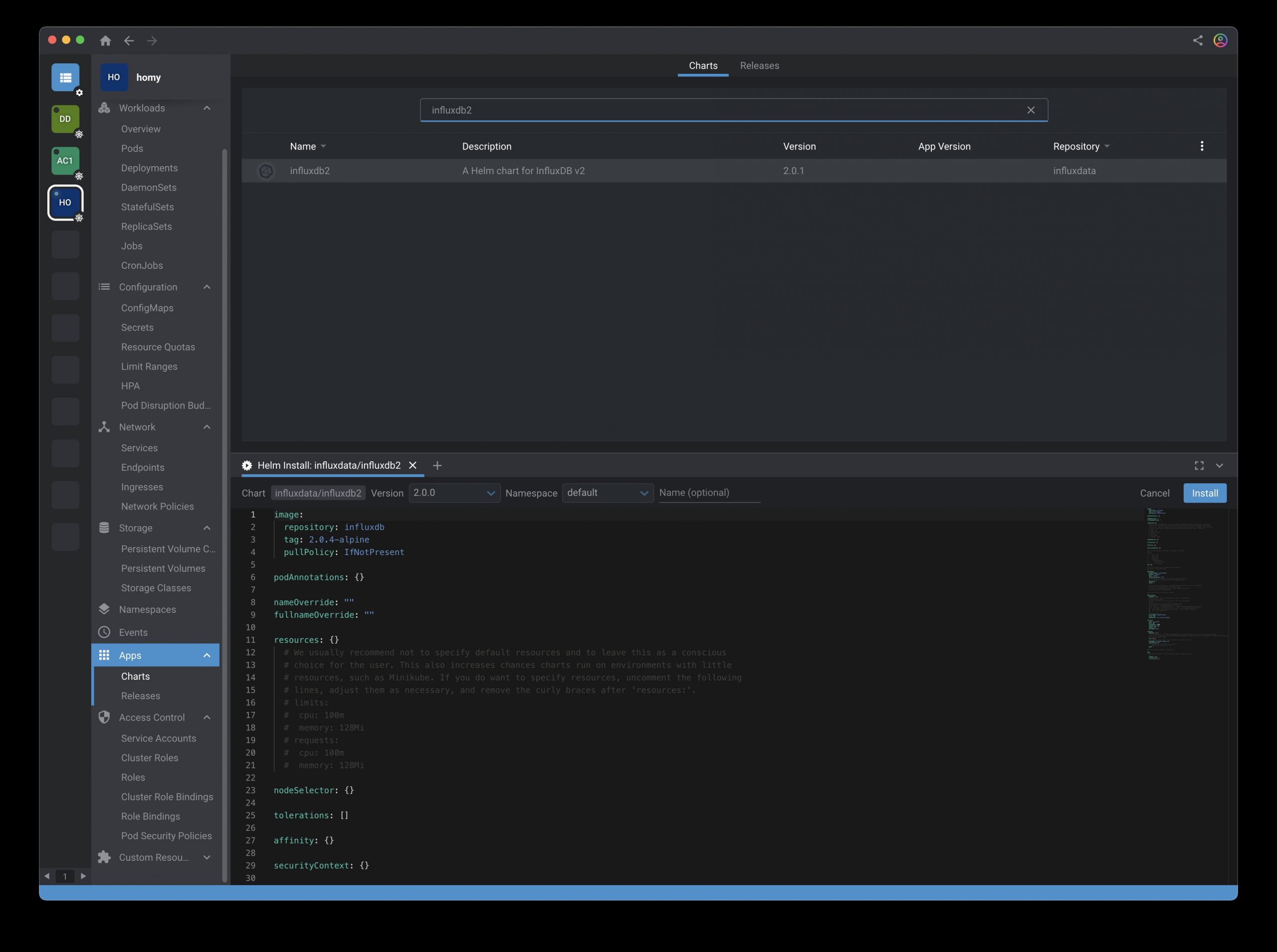I wanted to install InfluxDB 2 on a RaspberryPi 4 in Kubernetes for my home lab setup. I found out, this is not too easy because of 64bit OS and Influx Helm charts. Therefore, here is the comprehensive guide to installing Influx on k8s.
Prerequisites

I have used the Raspberry Pi 4 Model B(*) for my experiments, but this should also work with the Raspberry Pi 3. The newer RPIs are needed because of the 64-bit architecture because Influx just provides Docker images for 64-bit ARM. Of course, I learned this the hard way.
It is also necessary to install a native 64-bit OS on the RPI. This can be Raspberry Pi OS (64-bit beta) or Ubuntu Server (untested). It won’t work if you just set the 64-bit flag on the boot command line. The kubernetes (or helm) architecture selection mechanism will fail in this case.
For Kubernetes, I used a plain k3s (v1.19.15) installation via k3sup. I used Helm (v3.5.4) on a remote machine for the installation.
Installation of InfluxDB 2 in Kubernetes
I used the helm charts from Influx itself. They have some flaws, but in the end, they worked. I also tested with the bitnami help charts, but they didn’t work because of a missing image for ARM architecture. This can maybe be fixed manually, but I was happy with the Influx charts.
To use the helm charts, you need to add the repo to helm:
helm repo add influxdata https://helm.influxdata.com/
Then search for the influxdb2 helm chart. I have used Lens for this step.

At the time I’ve tried, version 2.0.1 of the helm chart was the latest. This chart didn’t work because of a wrong file path (https://issueexplorer.com/issue/influxdata/helm-charts/350). Version 2.0.0 worked fine despite a minor older version of the InfluxDB.
Additional to the helm charts, I have set up an ingress to access influx UI from the outside. You need to replace the serviceName with the generated service name (auto-generated from the helm chart process).
---
apiVersion: networking.k8s.io/v1beta1
kind: Ingress
metadata:
name: influx-ingress
annotations:
kubernetes.io/ingress.class: "traefik"
traefik.frontend.rule.type: PathPrefixStrip
spec:
rules:
- http:
paths:
- path: /
backend:
serviceName: influxdb2-xxxxx
servicePort: 80
This way I can access the InfluxDB 2 on the Raspberry Pi 4 through the Kubernetes. A drawback is the missing custom base path of influx. Therefore, you can’t use another path other than the root for the ingress rule.
I hope this helps you to set up InfluxDB 2 on the Raspberry Pi 4 in Kubernetes. Let me know if you have struggles or tips for even better ways.
Leave a Comment